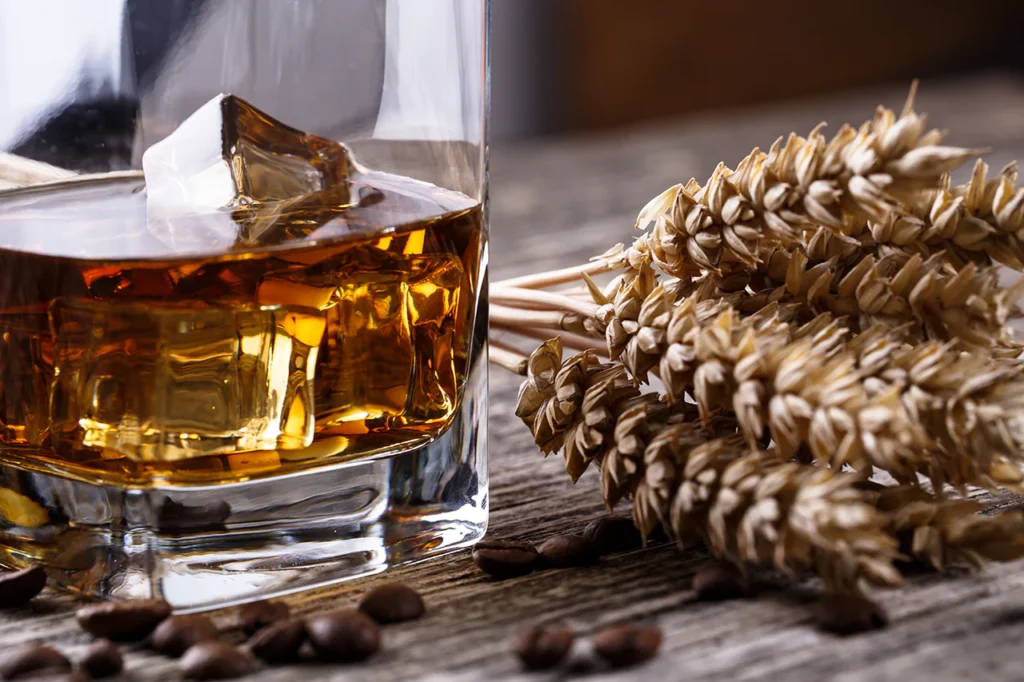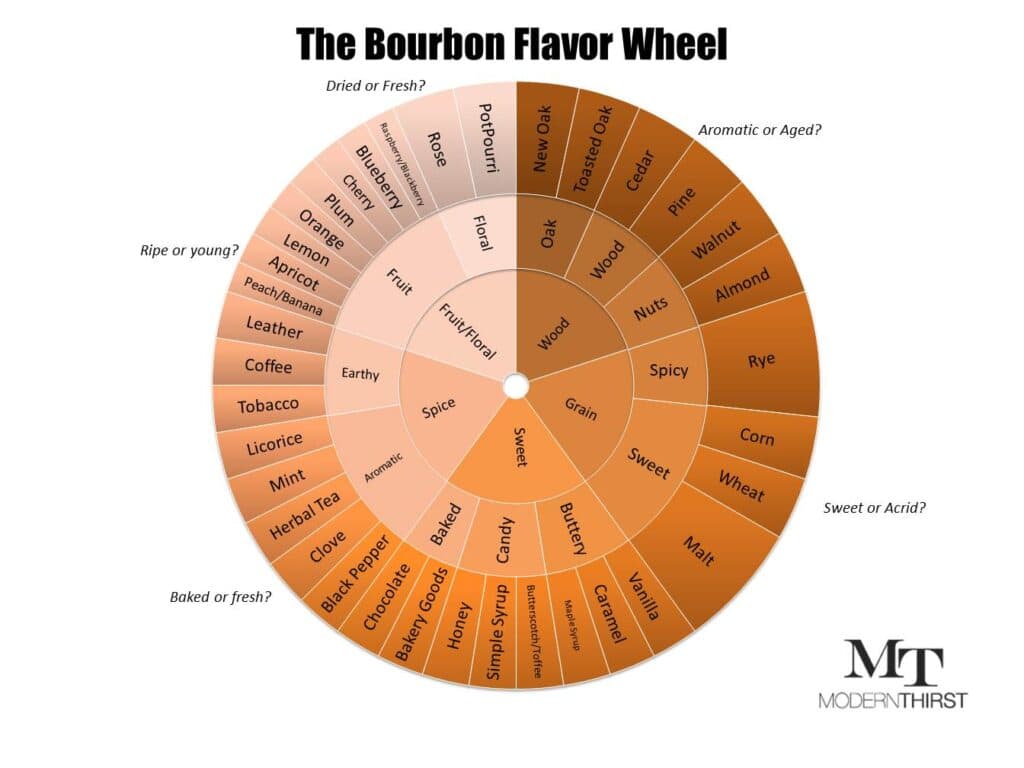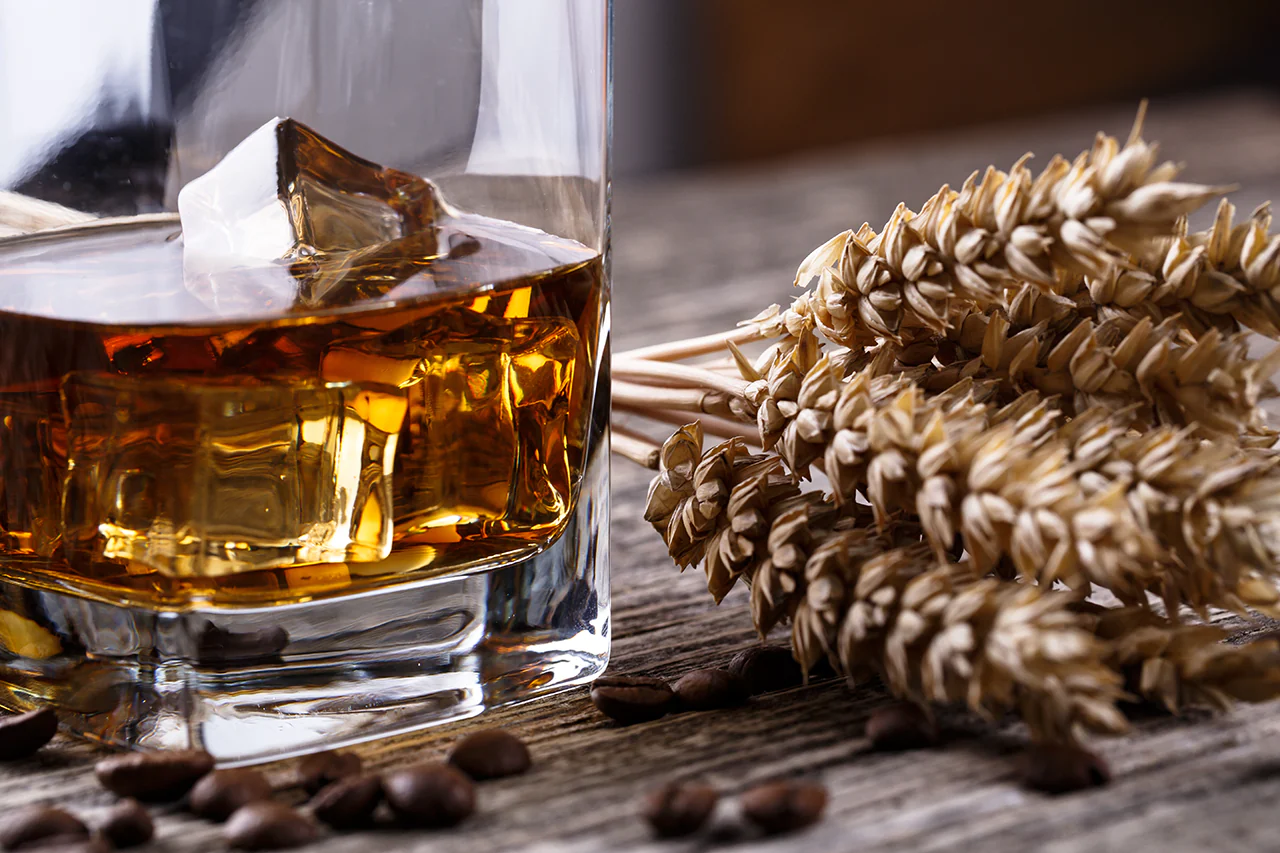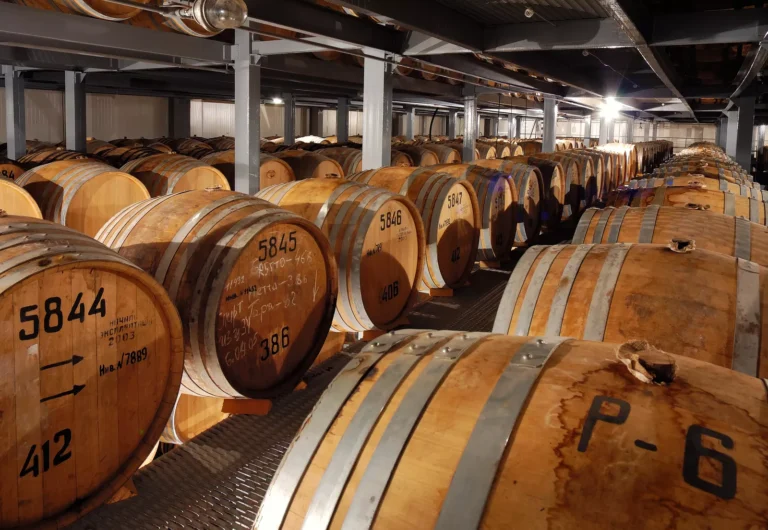Flavor Profiles and Tasting Notes
American whiskey and bourbon are renowned for their rich, complex flavors and aromatic profiles. Understanding these flavors and how to taste them can greatly enhance your appreciation of these spirits. In this article, we will delve into the common flavor profiles and tasting notes found in American whiskey, the typical flavors in bourbon, and provide detailed tasting notes and techniques to guide your whiskey-tasting journey.
Common Flavor Notes in American Whiskey
American whiskey, known for its wide range of flavors, is influenced by various factors, including the grains used, the aging process, and the barrels in which it is aged. Let’s explore these influences in detail.

Flavor Influences from Grains
The choice of grains in the production of American whiskey significantly impacts its flavor profile. Typically, the grain bill includes corn, rye, barley, and wheat, each contributing unique characteristics.
- Corn: Imparts sweetness and a creamy texture.
- Rye: Adds a spicy, peppery kick and complexity.
- Barley: Contributes a nutty, malted flavor and aids in fermentation.
- Wheat: Provides a smooth, soft mouthfeel and mild sweetness.

Aging and Barrel Impact
The aging process and the type of barrels used play a crucial role in developing the flavor profile of American whiskey. The interaction between the spirit and the wood adds layers of complexity.
- New Charred Oak Barrels: By law, American whiskey must be aged in new charred oak barrels. This imparts distinctive flavors of vanilla, caramel, and spice.
- Aging Duration: The length of aging affects the depth and intensity of flavors. Longer aging periods usually result in richer, more nuanced profiles.

Vanilla, Caramel, and Spice
These are some of the most recognizable flavors in American whiskey, primarily derived from the interaction with oak barrels.
- Vanilla: Comes from the breakdown of lignin in the wood.
- Caramel: Develops from the caramelization of wood sugars during the charring process.
- Spice: Often includes notes of cinnamon, clove, and nutmeg, contributed by the oak and sometimes enhanced by rye in the mash bill.
Typical Flavors in Bourbon
Bourbon, a specific type of American whiskey, must contain at least 51% corn in its grain bill and is known for its distinctively sweet flavor profile.

Sweetness from Corn
The high corn content in bourbon results in pronounced sweetness, which can be described as:
- Rich Caramel: A hallmark of bourbon, offering a deep, luscious sweetness.
- Honey: Adds a light, floral sweetness that complements the heavier caramel notes.
- Toffee: A blend of butter and sugar notes that provide a smooth, creamy sweetness.
Smokiness from Charred Barrels
The charring of barrels not only contributes to the sweet and spicy flavors but also imparts a subtle smokiness to bourbon.
- Charcoal: Adds a faint smoky aroma and taste, balancing the sweetness.
- Toasted Oak: Offers a warm, woody flavor that enhances the overall complexity of bourbon.
Tasting Notes and Techniques
Tasting whiskey is an art that involves careful observation and sensory engagement. Here, we outline the techniques and key aspects of whiskey tasting.
How to Taste Whiskey
To fully appreciate the flavors of whiskey, follow these steps:
- Pour and Observe: Pour a small amount of whiskey into a glass. Observe the color, which can indicate age and barrel type.
- Swirl and Smell: Swirl the whiskey gently to release its aromas. Take a deep breath and note the different scents.
- Sip and Savor: Take a small sip and let it coat your palate. Pay attention to the initial flavors.
- Analyze the Finish: Note the aftertaste and how long the flavors linger.

Identifying Key Flavors
Being able to identify specific flavors in whiskey enhances your tasting experience. Focus on these elements:
- Nose: The aroma of the whiskey before tasting. Look for notes like fruit, spice, floral, and wood.
- Palate: The flavors you taste. Consider the sweetness, spiciness, and any unique characteristics.
- Finish: The lingering taste after swallowing. Is it long, short, sweet, or spicy?

Nose, Palate, and Finish
Each phase of tasting whiskey reveals different aspects of its flavor profile.
- Nose: Often, the nose will reveal the most complex array of aromas. Take your time to identify various scents.
- Palate: The palate can confirm what you smelled and add more depth. Swirling the whiskey in your mouth helps identify all flavors.
- Finish: The finish can be one of the most enjoyable parts, revealing lingering flavors that evolve over time.
Exploring Flavor Profiles
Understanding the flavor profiles of different types of whiskey can deepen your appreciation and guide your preferences.
- Single Malt: Known for its rich, complex flavors, often featuring notes of fruit, smoke, and wood.
- Blended Whiskey: Offers a balanced flavor profile, combining the strengths of various single malts and grains.
- Rye Whiskey: Characterized by its spicy, peppery notes and robust flavor.

Developing Your Palate
Enhancing your ability to taste and recognize flavors in whiskey involves practice and mindfulness.
- Keep a Tasting Journal: Document your observations and preferences.
- Compare Different Whiskeys: Tasting different types side-by-side can highlight subtle differences.
- Attend Tasting Events: These can provide expert guidance and introduce you to new whiskeys.
Pairing Whiskey with Food
Pairing whiskey with food can elevate both the whiskey and the culinary experience.

- Cheese: Aged cheeses, particularly blue cheese, can complement the flavors of whiskey.
- Chocolate: Dark chocolate pairs well with the sweetness and richness of bourbon.
- Smoked Meats: The smokiness in the meat can enhance the smoky notes in whiskey.
The Influence of Water and Ice
Adding water or ice to whiskey can alter its flavor and aroma.

- Water: A few drops can open up the flavors, making them more pronounced.
- Ice: Chilling the whiskey can mellow the flavors and make it more refreshing.
Regional Variations in American Whiskey
Different regions in the United States produce whiskey with distinct flavor profiles due to variations in climate, water sources, and production techniques.

- Kentucky: Known for bourbon, with its characteristic sweetness and rich, full-bodied flavors.
- Tennessee: Famous for its charcoal mellowing process, adding smoothness and subtle smokiness.
- New York: Emerging as a producer of craft whiskeys with innovative flavor profiles.
- Texas: Produces bold, robust whiskeys influenced by the state’s hot climate.
Historical Context of American Whiskey
The history of American whiskey is rich and fascinating, reflecting the nation’s cultural and economic development.
- Early Beginnings: Whiskey production in America dates back to the colonial era, with settlers using native grains.
- Prohibition Era: The 1920s saw a significant impact on whiskey production, leading to the rise of bootlegging.
- Modern Renaissance: The late 20th and early 21st centuries have seen a resurgence in craft distilling and innovation.

Modern Trends in Whiskey Production
Today’s whiskey market is dynamic, with new trends and innovations shaping the industry.
- Craft Distilling: The rise of small-batch distilleries focusing on quality and unique flavor profiles.
- Experimental Aging: Distillers experimenting with different types of barrels and aging techniques.
- Flavored Whiskeys: An increasing variety of flavored whiskeys, appealing to a broader audience.

Frequently Asked Questions
Conclusion
Understanding the flavor profiles and tasting notes of American whiskey and bourbon can significantly enhance your appreciation of these spirits. From the influences of grains and aging to the art of tasting, each aspect contributes to the rich, complex experience that whiskey offers. Whether you’re a novice or an aficionado, this guide provides the insights and techniques to deepen your knowledge and enjoyment of American whiskey and bourbon.
Disclosure: Our blog contains affiliate links to products. We may receive a commission for purchases made through these links. However, this does not impact our reviews and comparisons. We try our best to keep things fair and balanced, in order to help you make the best choice for you.







